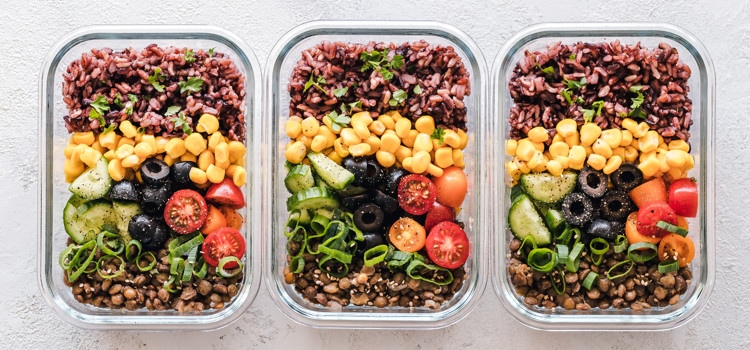When it comes to achieving your weight loss goals, one of the most powerful tools at your disposal is meal prepping. It’s a simple and effective strategy that can help you stay on track with your dietary choices, control portion sizes, and ultimately enhance your weight loss journey. In this article, we’ll explore the benefits of meal prepping and provide you with practical tips on how to get started.
The Power of Meal Prepping
Meal prepping involves planning, preparing, and portioning your meals in advance. It offers several significant advantages for those seeking to lose weight:
1. Portion Control
One of the biggest challenges in weight loss is managing portion sizes. When you prepare your meals in advance, you have better control over the amount of food you consume. This can help you avoid overeating and stay within your calorie goals.
2. Nutritional Balance
Meal prepping allows you to create well-balanced meals that include a variety of nutrients. You can ensure you’re getting the right mix of proteins, carbohydrates, and healthy fats, along with essential vitamins and minerals.
3. Reduced Impulsivity
When you have prepped meals readily available, you’re less likely to succumb to unhealthy food choices or fast food temptations. It reduces the impulse to grab convenient but less nutritious options.
4. Time-Saving
Contrary to what some may think, meal prepping can actually save you time in the long run. It eliminates the need to cook from scratch every day, making mealtime quicker and more convenient.
5. Portability
Prepped meals are easy to transport, making it simpler to stick to your diet when you’re on the go. Whether you’re heading to work, running errands, or traveling, you can take your healthy meals with you.
Getting Started with Meal Prepping
Now that you understand the benefits, let’s dive into how to get started with meal prepping for weight loss:
1. Plan Your Meals
Begin by deciding which meals you want to prep for. Many people start with lunch and dinner, but you can include breakfast and snacks if it fits your schedule and preferences. Once you’ve chosen the meals, make a menu for the week. Select recipes that align with your weight loss goals and ensure they’re nutritionally balanced.
2. Make a Grocery List
Based on your menu, create a shopping list that includes all the ingredients you’ll need. This step is crucial to avoid last-minute runs to the grocery store, which can lead to impulse purchases.
3. Invest in Containers
Invest in a set of high-quality, reusable containers in various sizes. These containers will be your best friends when it comes to portioning and storing your prepped meals.
4. Choose a Prep Day
Set aside a specific day or time each week for meal prepping. Many people prefer Sundays as it gives them a week’s worth of meals to start their workweek. Choose a time that works best for you and your schedule.
5. Cook in Batches
Prepare larger quantities of your chosen recipes to create multiple servings. This is a time-efficient way to ensure you have enough meals for the week. Consider investing in kitchen appliances like a slow cooker or Instant Pot that can help you cook in batches.
6. Portion Your Meals
Once your meals are cooked, use your containers to portion them out. Be mindful of portion sizes, and include a balance of proteins, vegetables, and healthy carbohydrates in each container.
7. Label and Store
Label your containers with the date of preparation to help you keep track of freshness. Store them in the refrigerator or freezer, depending on when you plan to consume them. Most cooked meals can last in the fridge for three to four days, while those intended for later in the week can be frozen.
8. Customize as Needed
If you enjoy variety, consider prepping some ingredients in advance and assembling your meals daily. For example, you can pre-chop vegetables, marinate proteins, or cook grains, and then combine them in different ways each day to keep things interesting.
Tips for Successful Meal Prepping
Here are some additional tips to ensure your meal prepping endeavors are a success:
1. Start Small
If you’re new to meal prepping, begin with one or two meals per day and gradually expand from there. This will help you develop the habit without feeling overwhelmed.
2. Mix and Match
Experiment with different recipes and combinations to keep your meals exciting. Variety can prevent meal prep from becoming monotonous.
3. Stay Organized
Keep your kitchen organized to streamline the meal prepping process. Label ingredients, containers, and meals for easy identification.
4. Stay Safe
Ensure food safety by storing meals at the correct temperatures. Invest in a food thermometer to make sure your cooked items reach the recommended internal temperatures before consuming or storing them.
5. Be Realistic
Consider your lifestyle and schedule when planning your meals. If you have a busy day ahead, choose meals that are easy to transport and eat on the go.
Conclusion
Meal prepping is a valuable tool in your weight loss journey. By planning, preparing, and portioning your meals in advance, you gain control over your dietary choices, save time, and set yourself up for success. It’s a practical and sustainable approach that can help you achieve your weight loss goals while enjoying delicious and nutritious meals. So, roll up your sleeves, stock up on containers, and start prepping your way to a healthier you!

